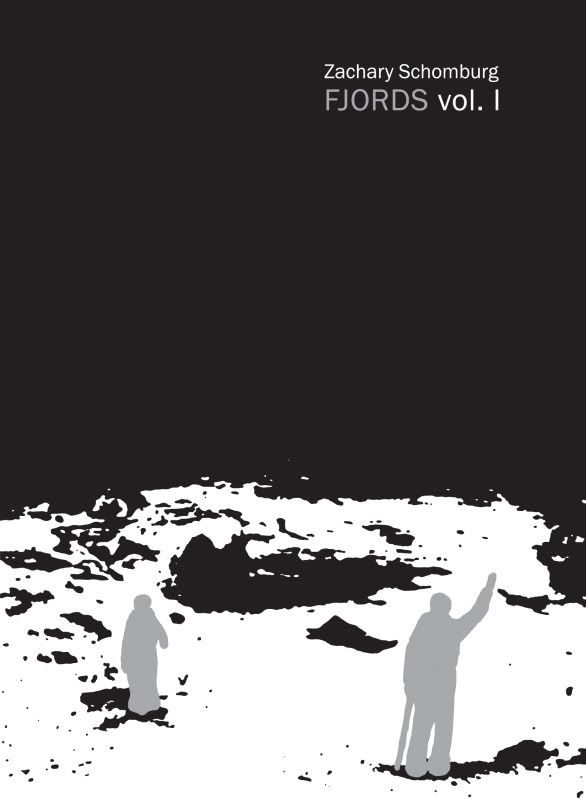Zachary Schomburg's Fjords Vol. 1
(Black Ocean, 2012) is a book of
death, and the speaker of these prose poems announces this directly
at the outset of the collection:
From the beginning I knew exactly what would kill me. Regardless, I convinced myself that it could be anything. I convinced myself that what would kill me would be made up of any of the random things that would kill anybody else. (1)
Yes, even though
the speaker of these poems knows “exactly what would kill” him,
which incidentally, comes “late one night, booming with slowness,
from the fjords” (1) of Spitsbergen, he creates a series of
“random” micro-narratives that detail what these possible deaths
that he constructs in his imagination would entail. Take, for
instance, the opening of the poem “Lake”:
I dive into the lake and cut my chest open on a piece of broken glass. The giant shard of glass goes through my chest and out my back. When I stand up out of the water I look like a statue in a blood fountain. (10)
Similarly gruesome
is the speaker's death in “Meat Counter”:
I touch my palm to the glass and leave a red palm print before my grandfather picks me up, gently like a baby, and begins to saw me into parts on the meat saw. He breaks my neck and cuts my head off, then breaks my legs and pulls it from my hip. (18)
Whether spurting “a
blood fountain” from his chest, being sawed into parts by his
grandfather, or any number of tragicomic endings, the imaginative
landscapes of these poems become “beautiful” because of—not in
spite of—“blood pumping wildly” throughout them.
Ironically,
though, the speaker's greatest fear is not death, but the possibility
that “we'll never make it...to any actual ending, that we'll just
keep on living forever” (5). But this fear is not realized; for,
indeed, in “Reckoner,” the collection's finale, “a woman in a
long black dress and a black scarf” welcomes him to Spitsbergen,
“lifts up her dress [and] Nothing happens next” (57). The speaker
dies when the reader reads the last page, the narrative ends, and,
obviously, nothing happens next. The world is
“always as it is, and always as it seems” (15), which means the
“I” within a poem will expire when no more poems remain. Even
characters succumb to the inevitability of time.
But it
is not just the
speaker of Fjords Vol.1 who
dies. In fact, everyone dies.
Whether it's a father who is “lost in the Arctic Ocean” and found by his son “face down in the white [in] a frozen obedience”
(6), a lover who is kicked off the side of the Eiffel Tower, an
airplane full of passengers who perish in a fiery crash, a
bank-teller mauled by a lion, a woman trampled by elephants, or even
“some cats” who “die in a series of shivery fits, right in
front of us” (49), no one escapes The End.
In death's
universality, though, we not only can rejoice, but we also can
experience love. No more clearly does the bond between love and death
occur than in “Someone Falls In Love With Someone”:
Someone falls in love with someone but that person falls in love with someone else, and that person falls in love with a different person, and that person falls in love with someone else too. I am the third person and you are the fourth person. I am an ambulance driver and you are an ambulance driver. I am resuscitating someone in a basement and you are resuscitating someone else in the same basement. Are you falling in love with someone else? I ask from across the basement but you can't hear me. I am being strangled by the asphyxiated person who I am resuscitating and you are being strangled by the asphyxiated person who you are resuscitating. (14)
People in love and
people dying: the archetypal tropes of humanity's existence writ
large in the dual, comic deaths of lovelorn paramedics who are
strangled by the asphyxiated victims they came to save.
Of
course, no one (not Schomburg, not any other poet, not ourselves) can tell
us “what death really is,” and even to imagine the experience
will “seem implausible until it happens” (25). But we are human,
so we must die; and if we are to die, then we must eventually
confront death. In order to do so, then, Schomburg suggests that we
hold it in our loving embrace; or as he writes: “Falling in love
with the death thought is a way of never really dying. You let an
idea hold you in its real arms” (4) so everything you have ever
loved will never slip away.


No comments:
Post a Comment